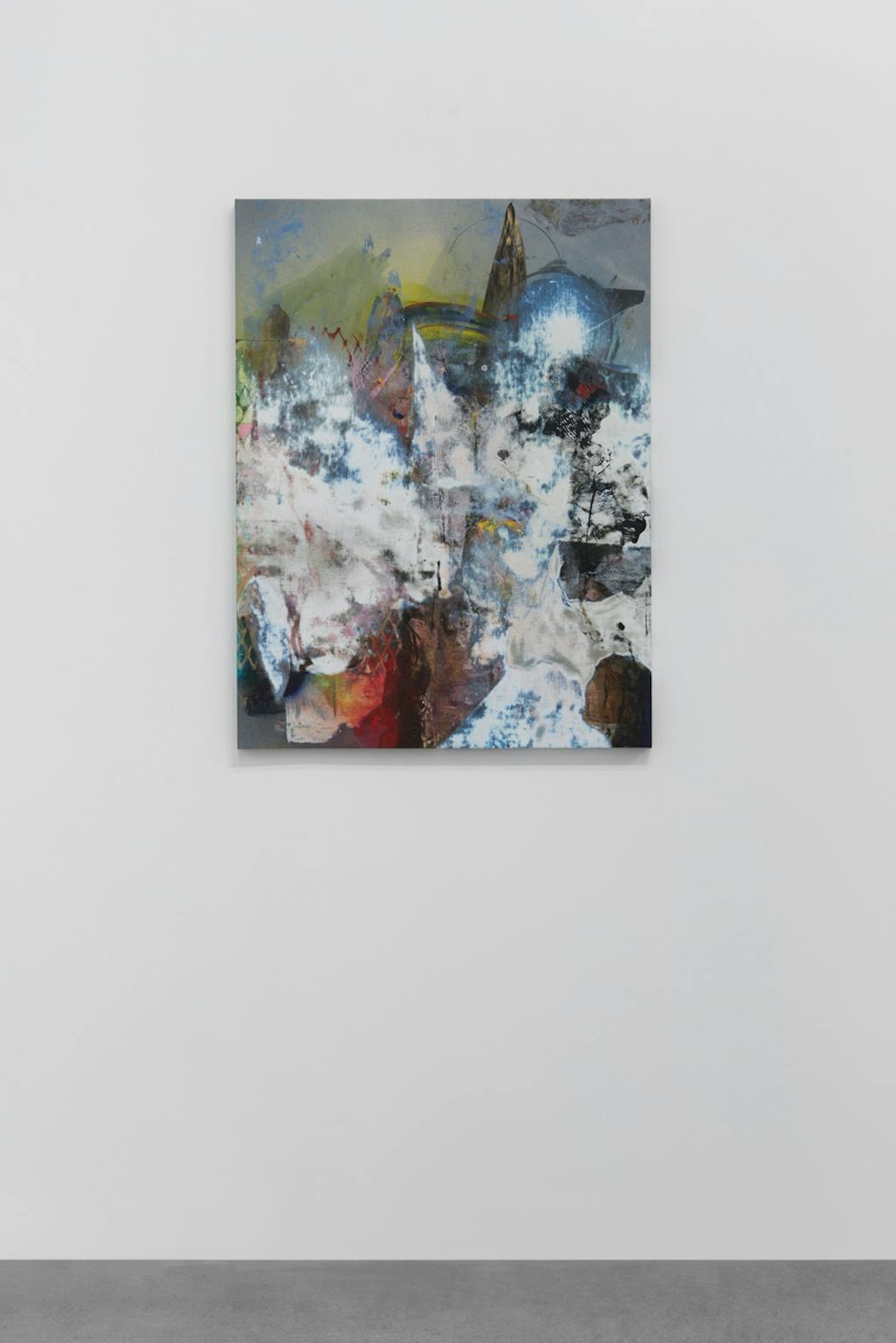
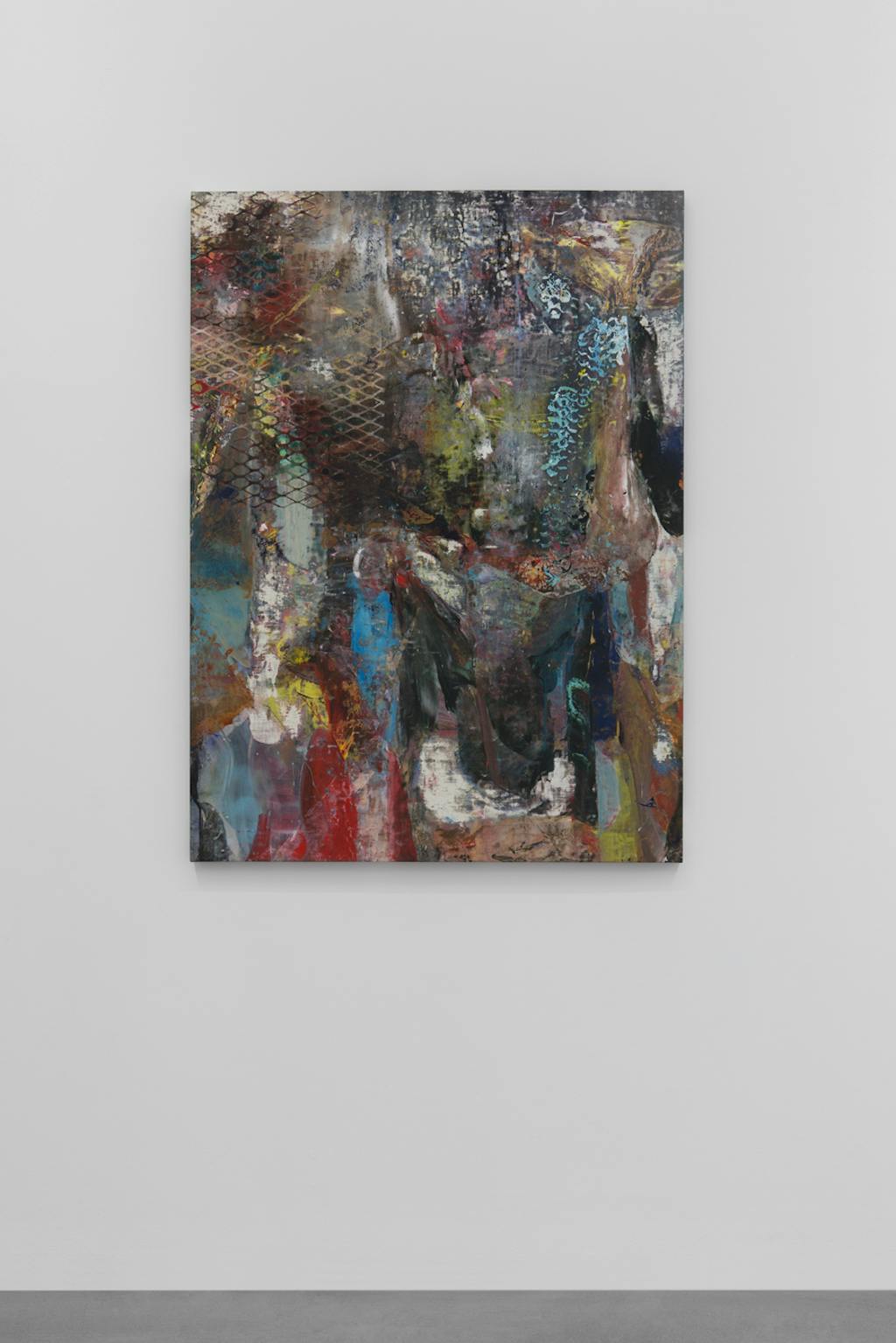
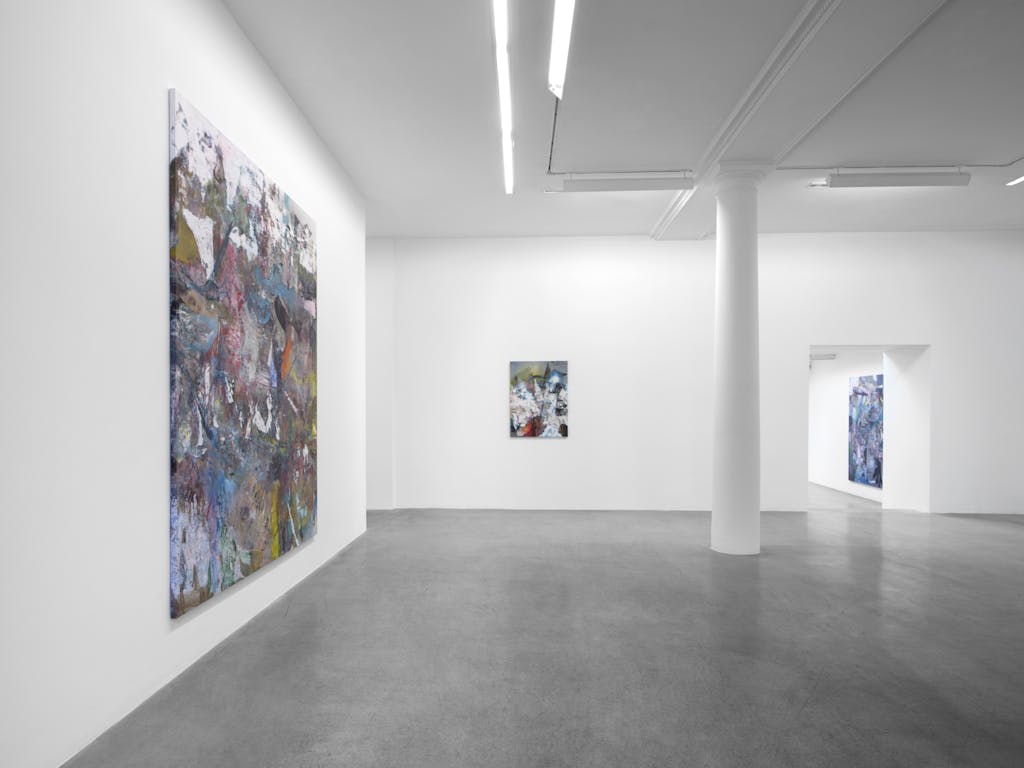
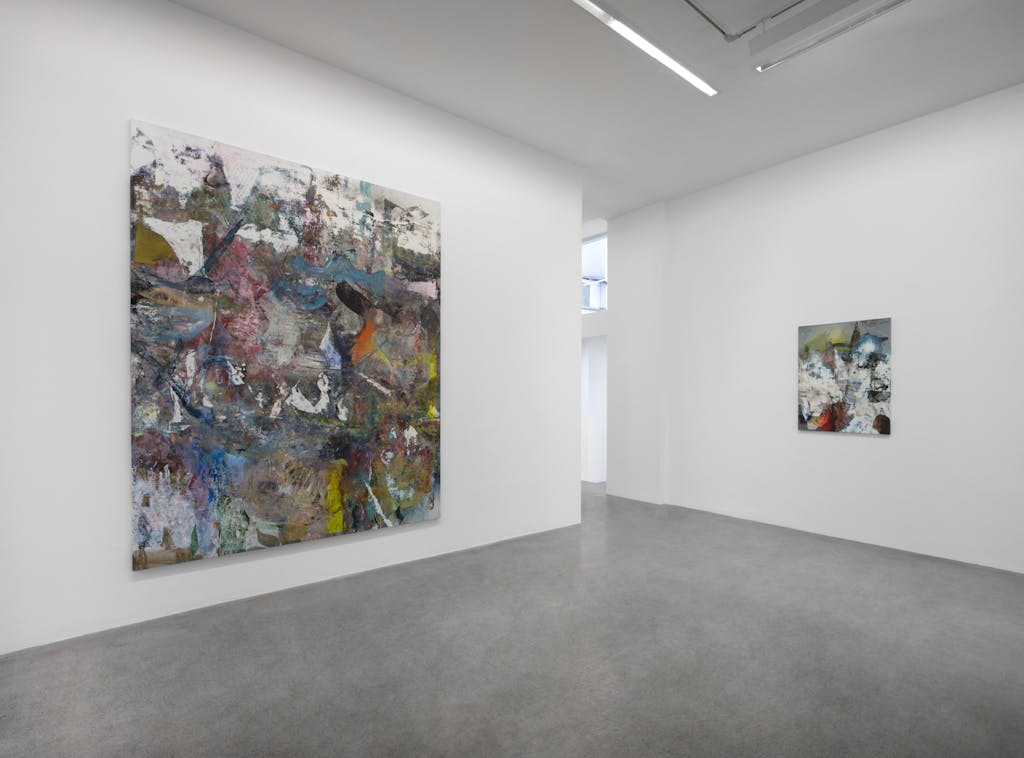
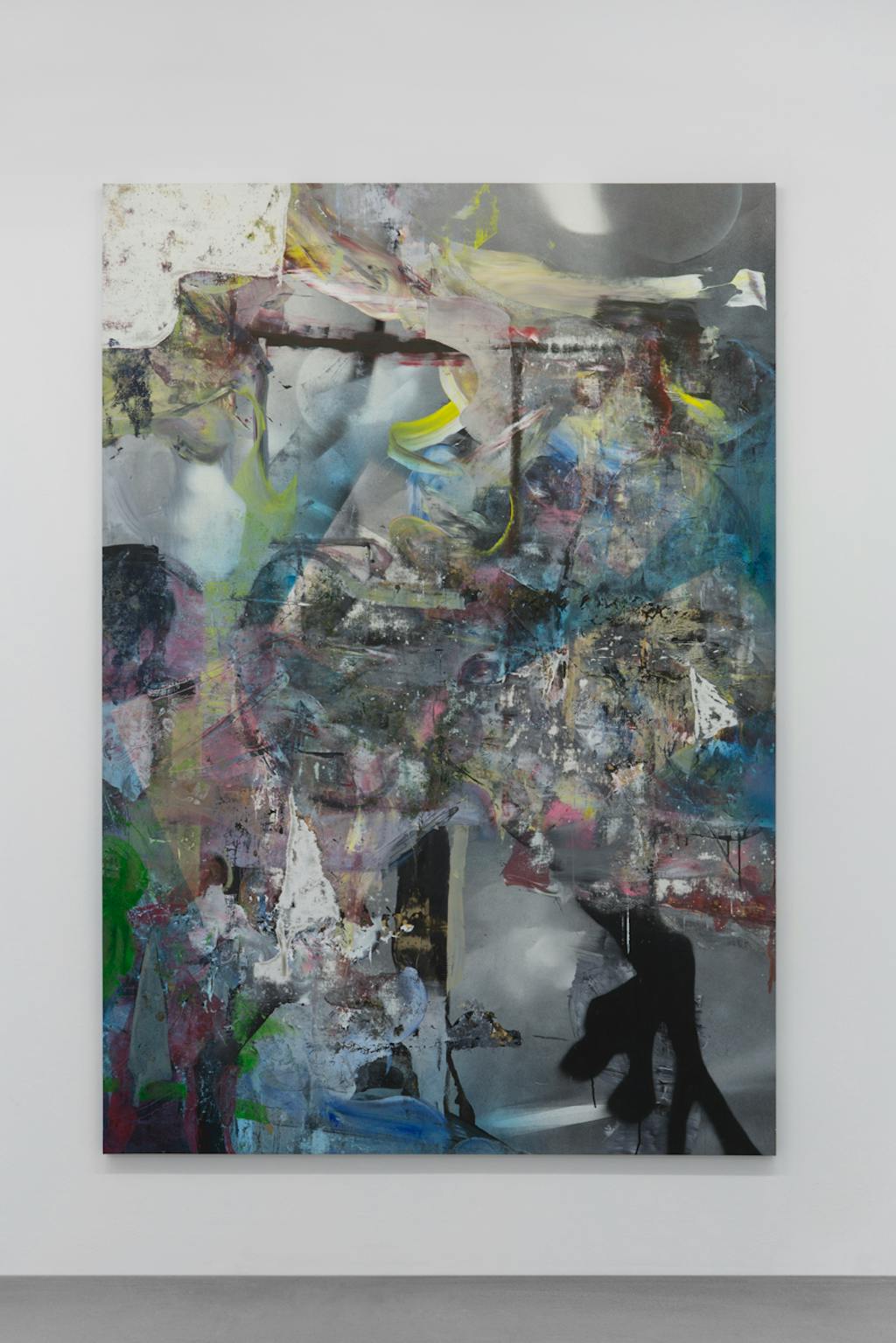
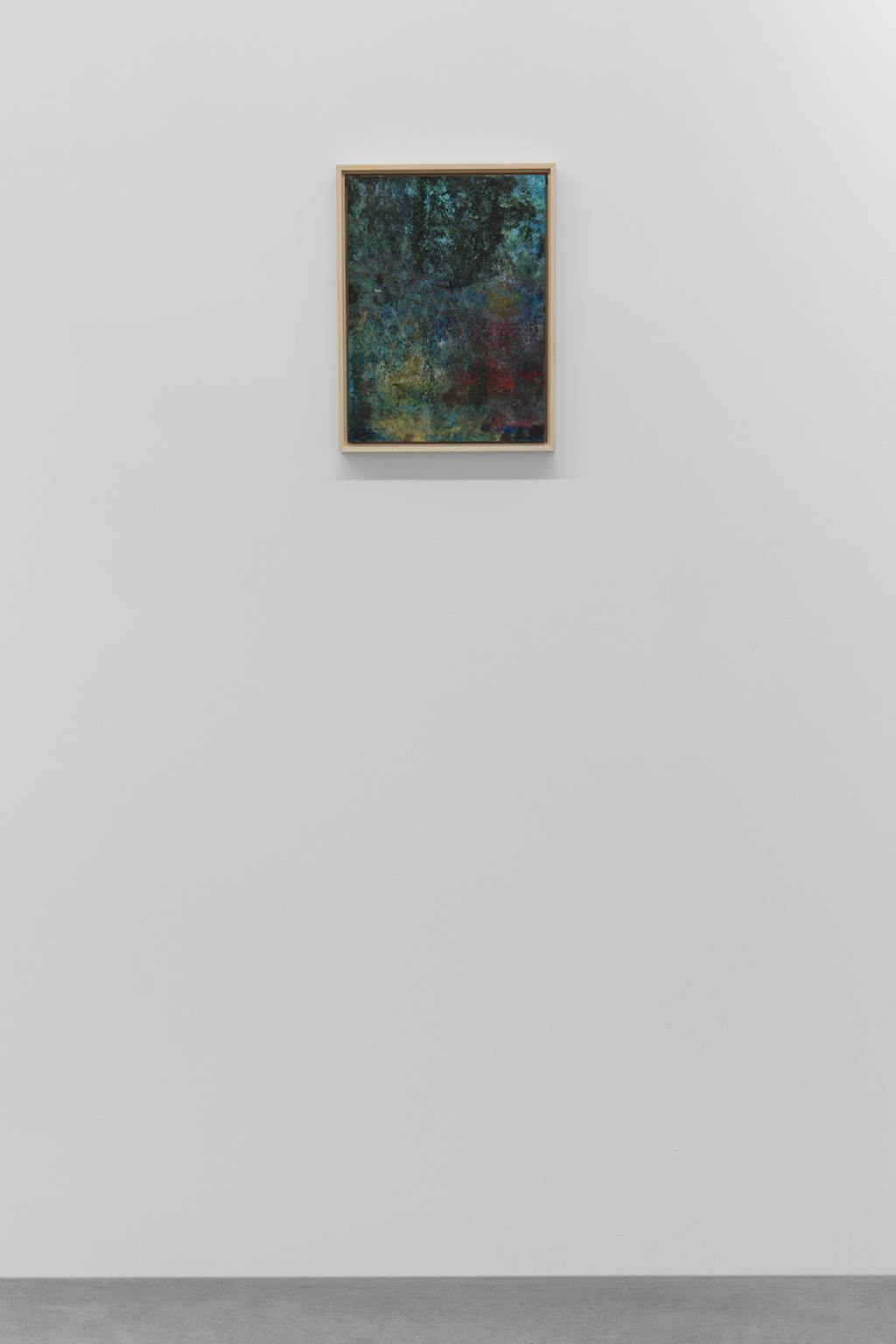
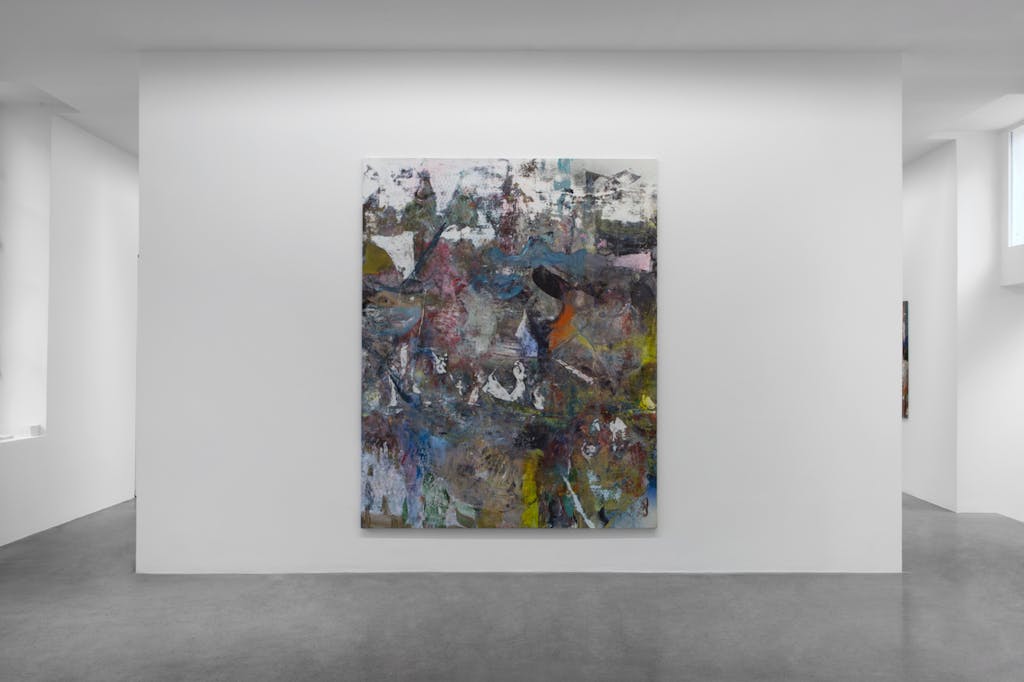
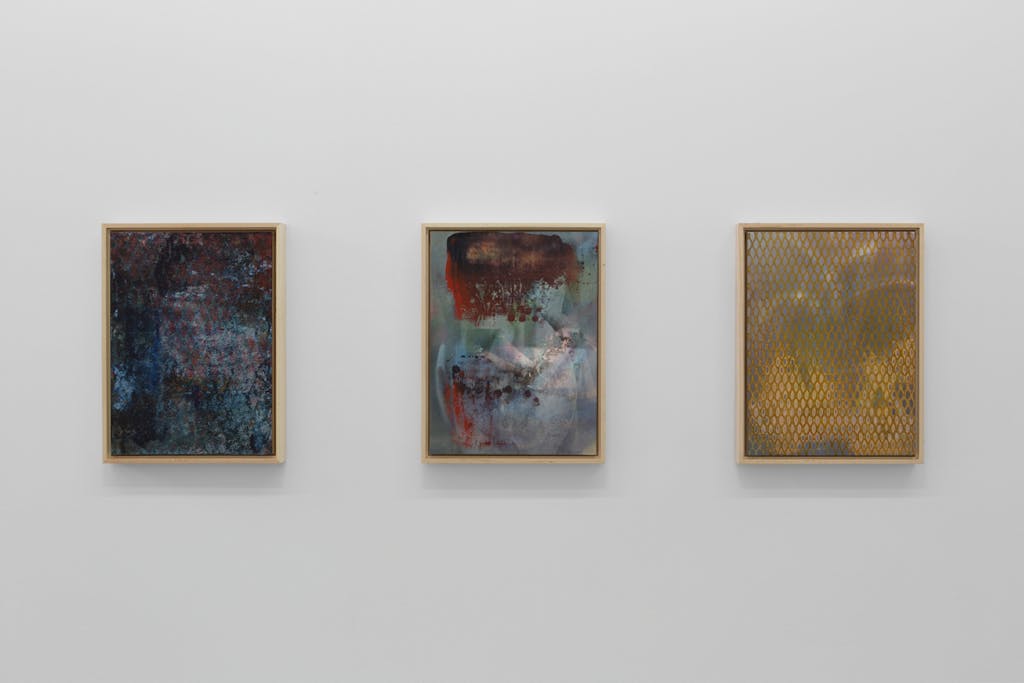
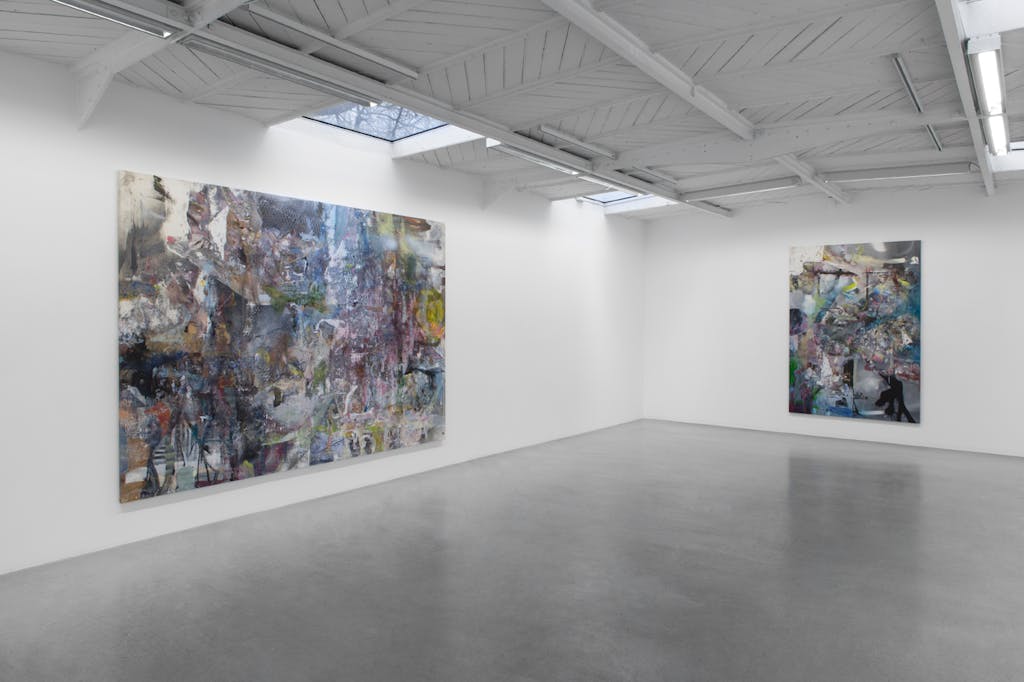
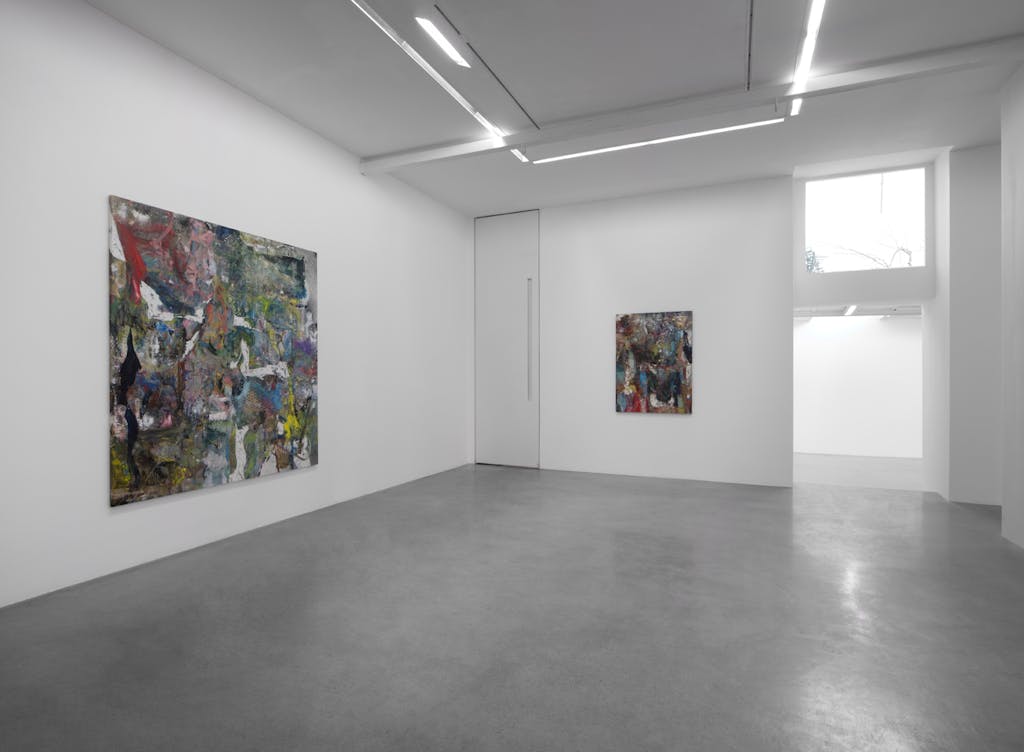
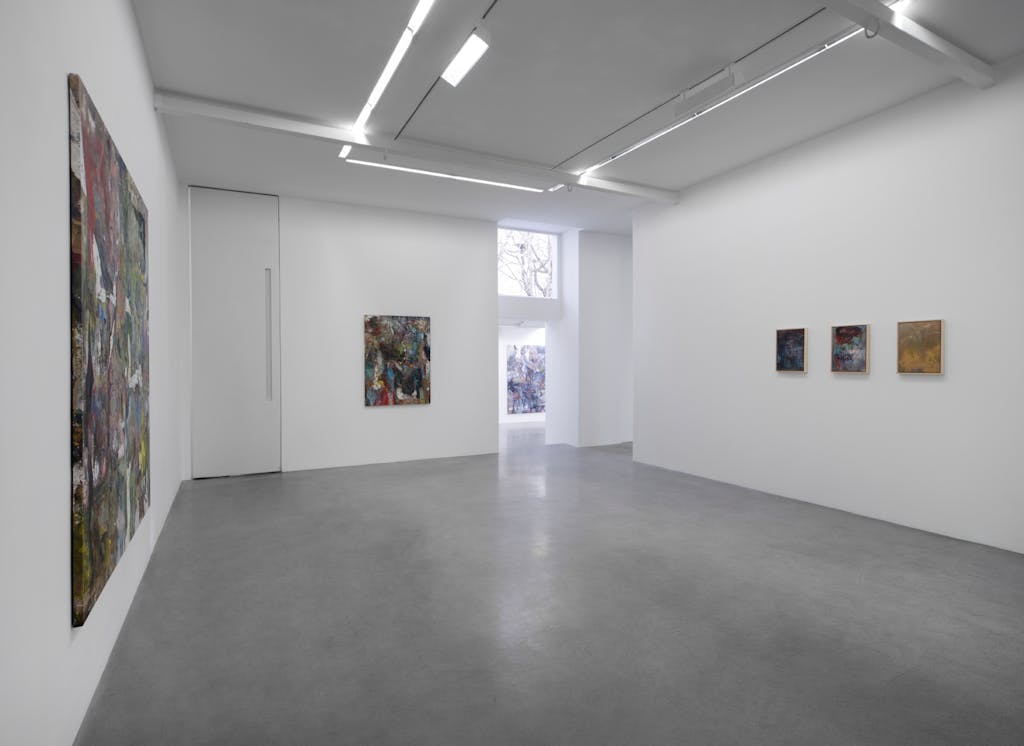
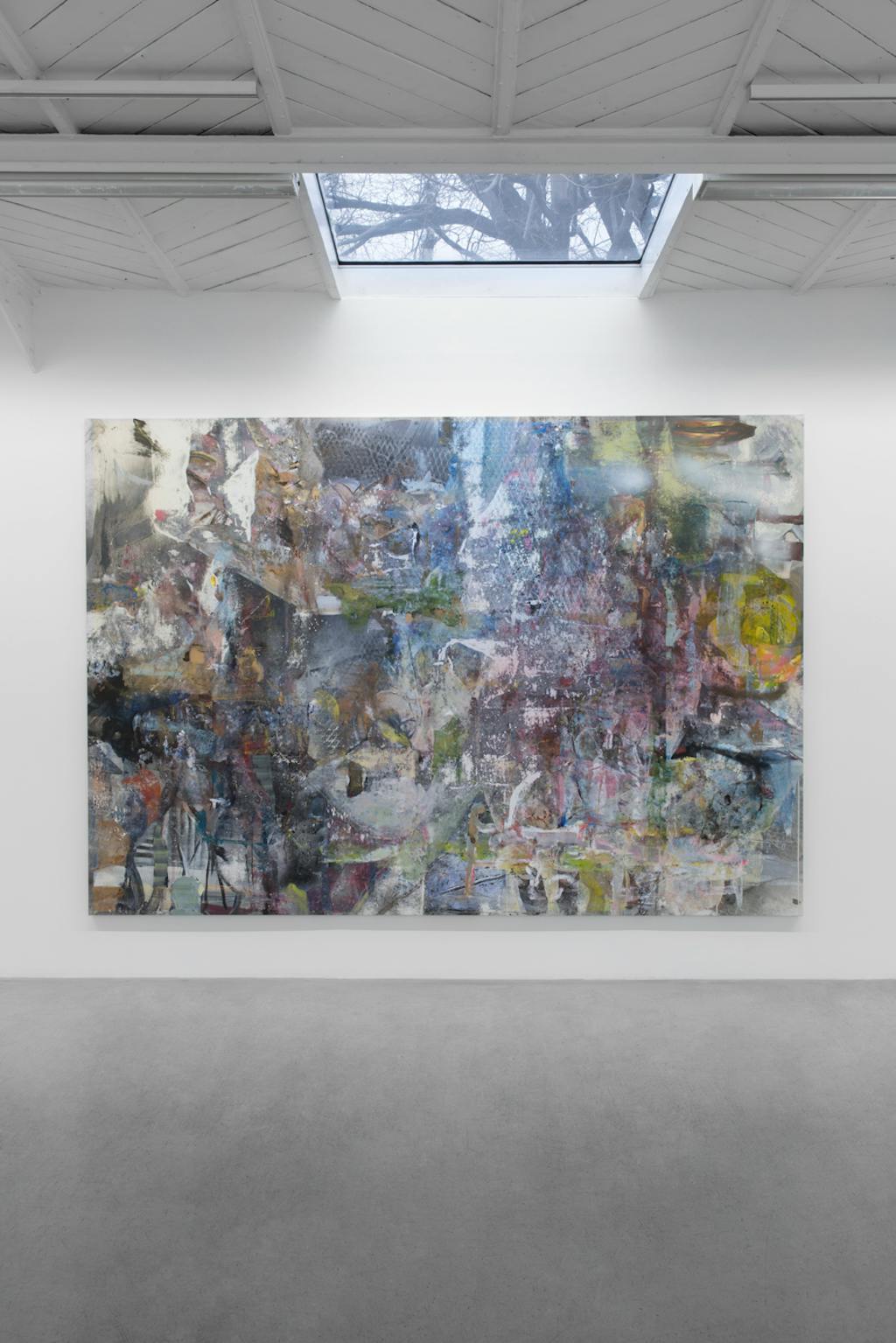
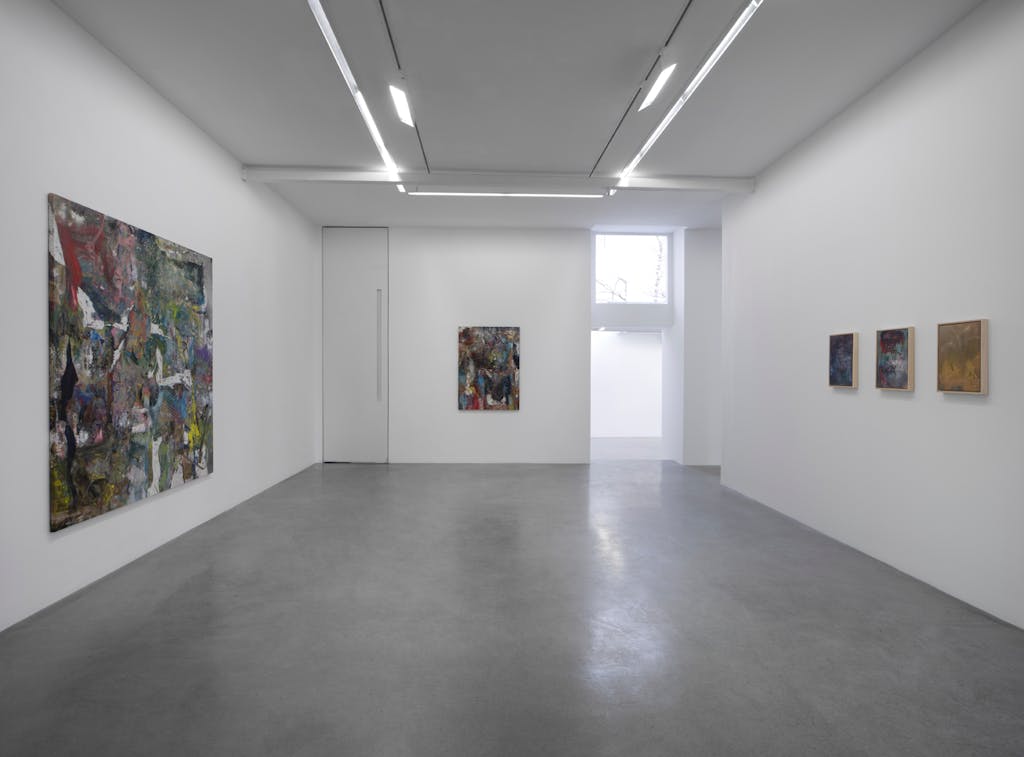
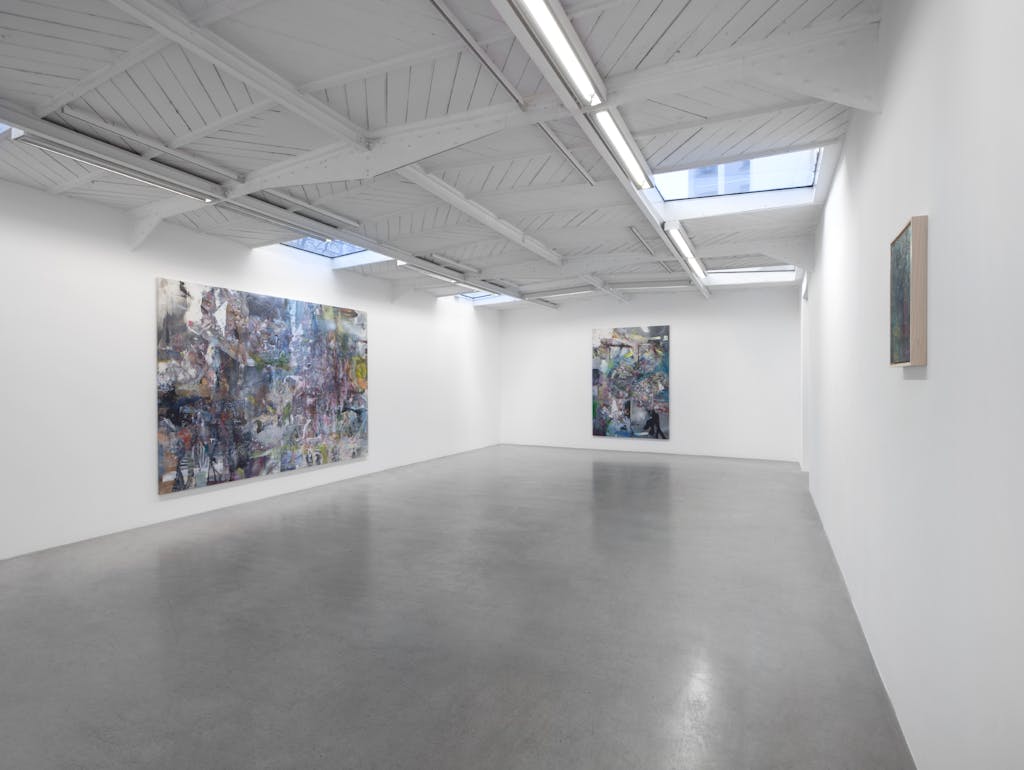
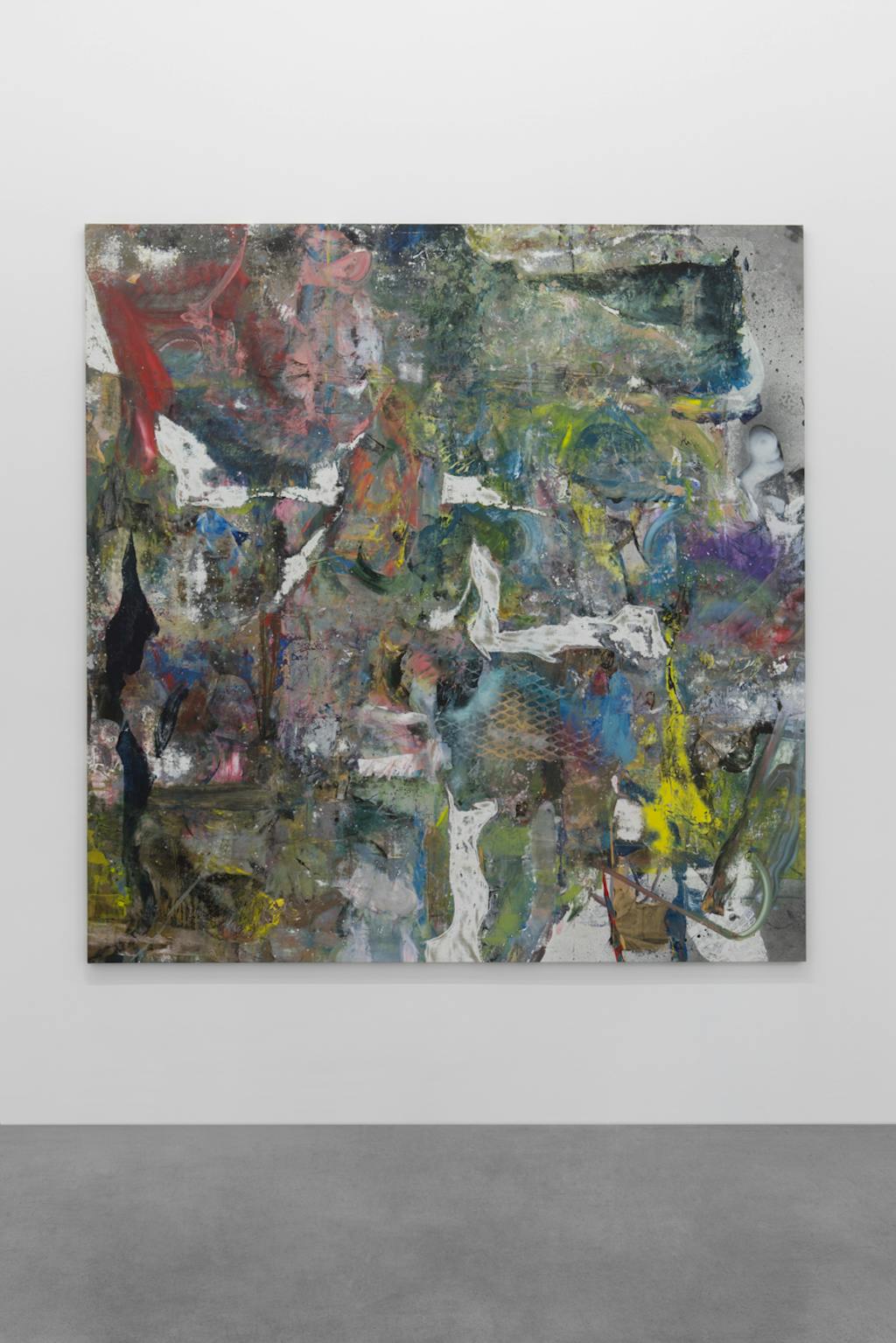
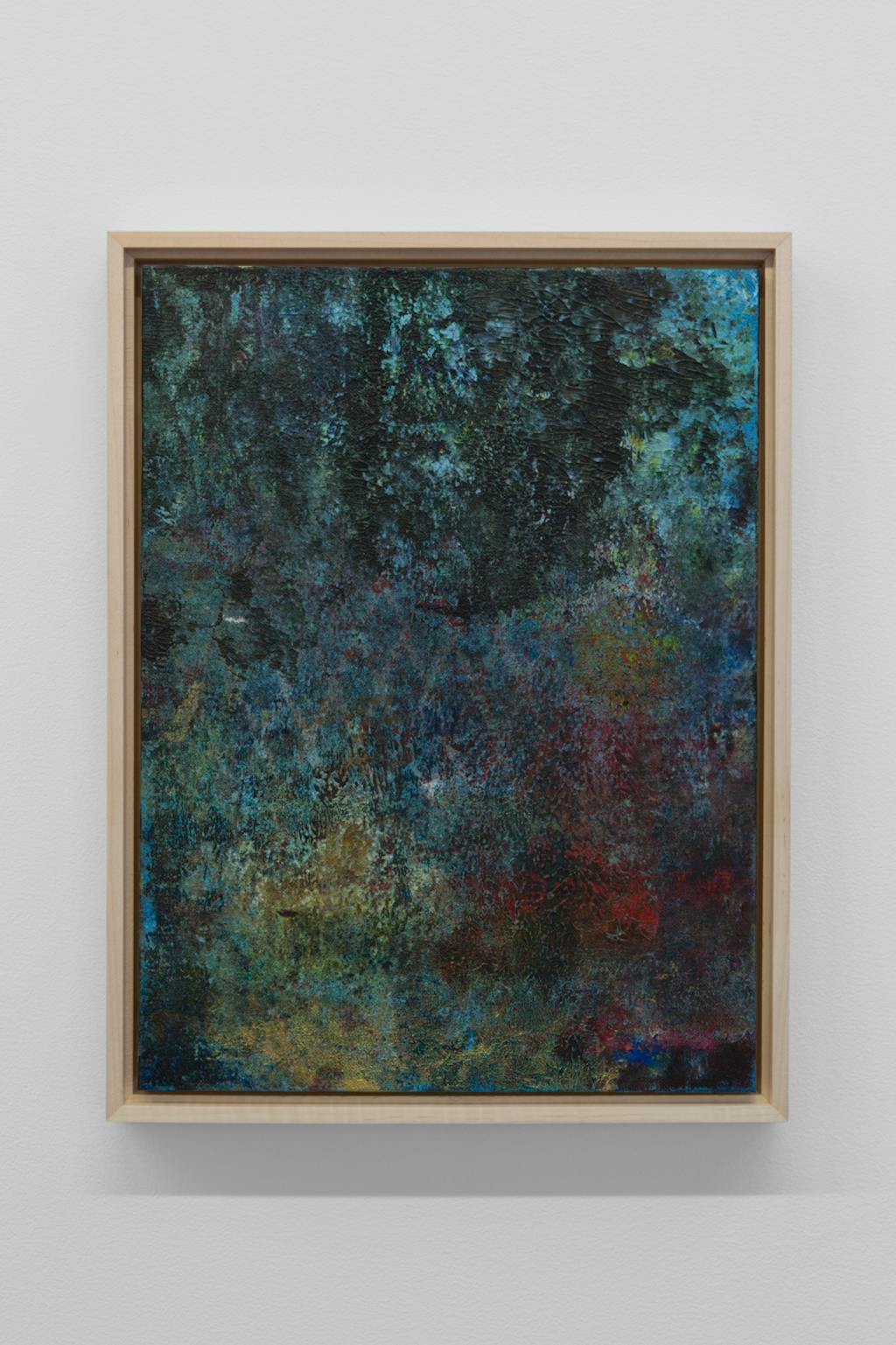
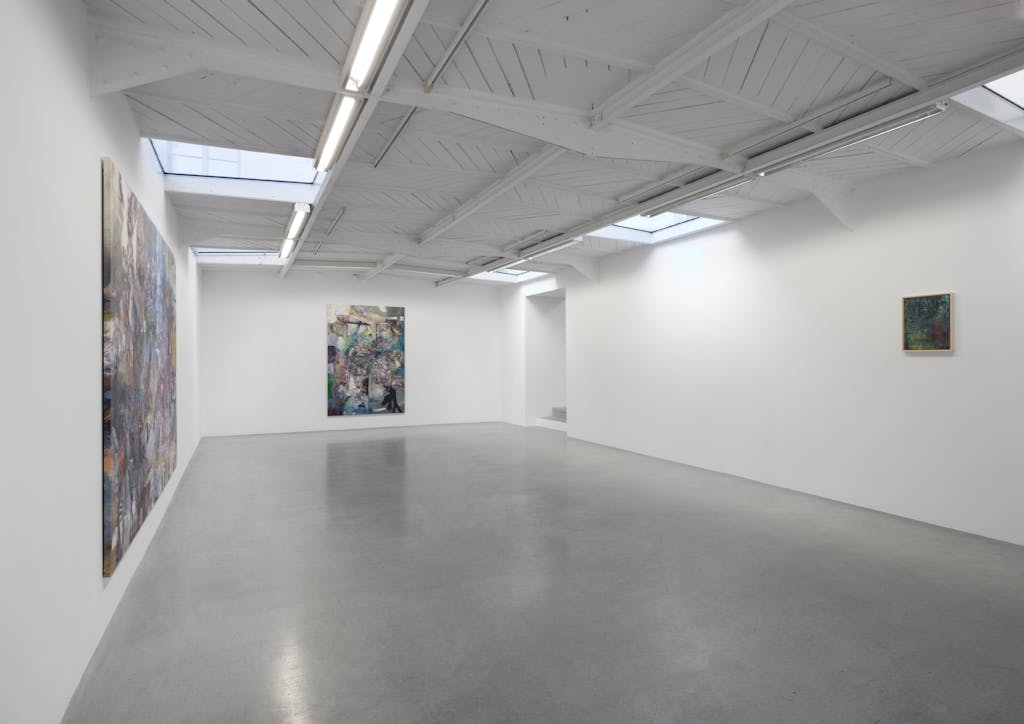
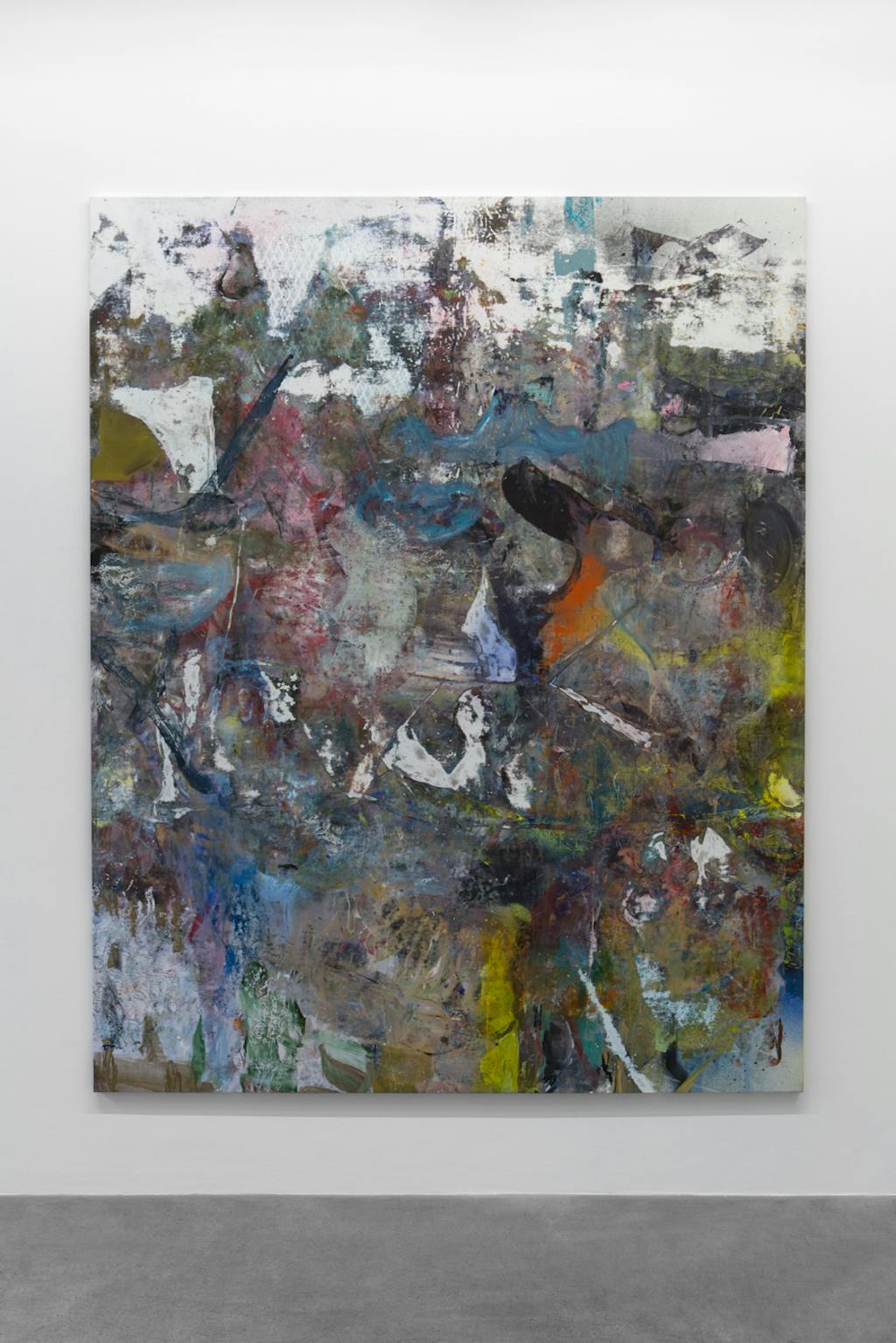
At first, US artist Liam Everett’s Screen Paintings evoke strange maps, chaotic landscapes overrun with luminous spasms. It is impossible to establish a precise correlation between the Irish topology evoked in the captions accompanying each of the paintings and the paintings themselves. But each of the villages named here (Annadorn, Ardgroom, Cloghanmore…) is home to an important Neolithic site (dolmens, megalithic alignments, tombs). This is an important piece of information for approaching Everett’s painting, as—constructing and deconstructing, erecting and excavating—it pertains at once to the spheres of architecture and the archaeological dig.
The paintings are built up with many layers. They are the result of a long process during which the artist executes various, heterogeneous operations. He works with the canvas on the floor, or on the wall, without an easel. In this way, Everett works ‘on’ and ‘before’ it. This double positioning sets in motion a decision made not only in the visual field but also in that of the physical in space, anticipating— and so directing—the viewer’s gaze, as it is scattered in different directions, solicited by multiple interventions without a pre-established centre. On top of the application of the pictorial materials, protocols of effacement generate a ceaseless back and forth between addition and subtraction. The paintings are also subjected to the abrasive activity of natural elements (sun, wind), salt, and alcohol, which disturb the internal structure of the painting and give to the finished surface qualities at once reflective and porous, at times generating subtle anthropomorphic apparitions.
The smaller paintings in the series of Mask Paintings begin with vinyl prints glued onto wooden panels. The works are exposed directly to the sunlight, and Everett applies up to thirty layers of a thin varnish, intermittently effaced. The captions of these works (Helvine, Tinzenite…) come from mineralogy. A recurrent grid pattern encloses the composition, revealing in its interstices, like an openwork panel or an Oriental lattice, the layered strata drawing the gaze towards the interior of the painting.
With these two new series, Everett has wanted push in the direction of subtraction the modernist concept of ‘two-dimensionality’. This two- dimensionality ‘filters’ in a way the light and air so that they appear at the surface of the painting. In a first instance, it holds the painting back from divulging the long, almost alchemical series of operations the artist has subject it to, while at the same time, the effects of transparency open onto a depth making it possible to reconstitute the ‘life’ of the work. Life seems indeed to be the eminently adequate word here: the paintings feel truly alive and the process in an uninterrupted state of becoming. Everett himself says, ‘I am very interested in the possibility of a work that’s always working, instead of a work that’s been worked.’
Liam Everett was born in 1973 in Rochester (USA). He lives and works in San Francisco (USA). He has exhibited in a number of important museums around the world such as: Museum of Modern Art, San Francisco; Museum Dhondt-Dhaenens, Deurle; San Jose Institute of Contemporary Art; Headlands Center for the Arts, Sausalito; CCA Wattis Institute, San Francisco. His work is part of various public collections: the Metropolitan Museum of Art, New York; San Francisco Museum of Modern Art, San Francisco; Berkeley Art Museum and Pacific Film Archive ; Fondation Carmignac, Paris.
In 2017 he received the SECA Art Award delivered by the San Francisco Museum of Modern Art.


















You are using an outdated browser.
Please upgrade your browser to improve your experience.